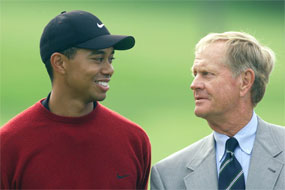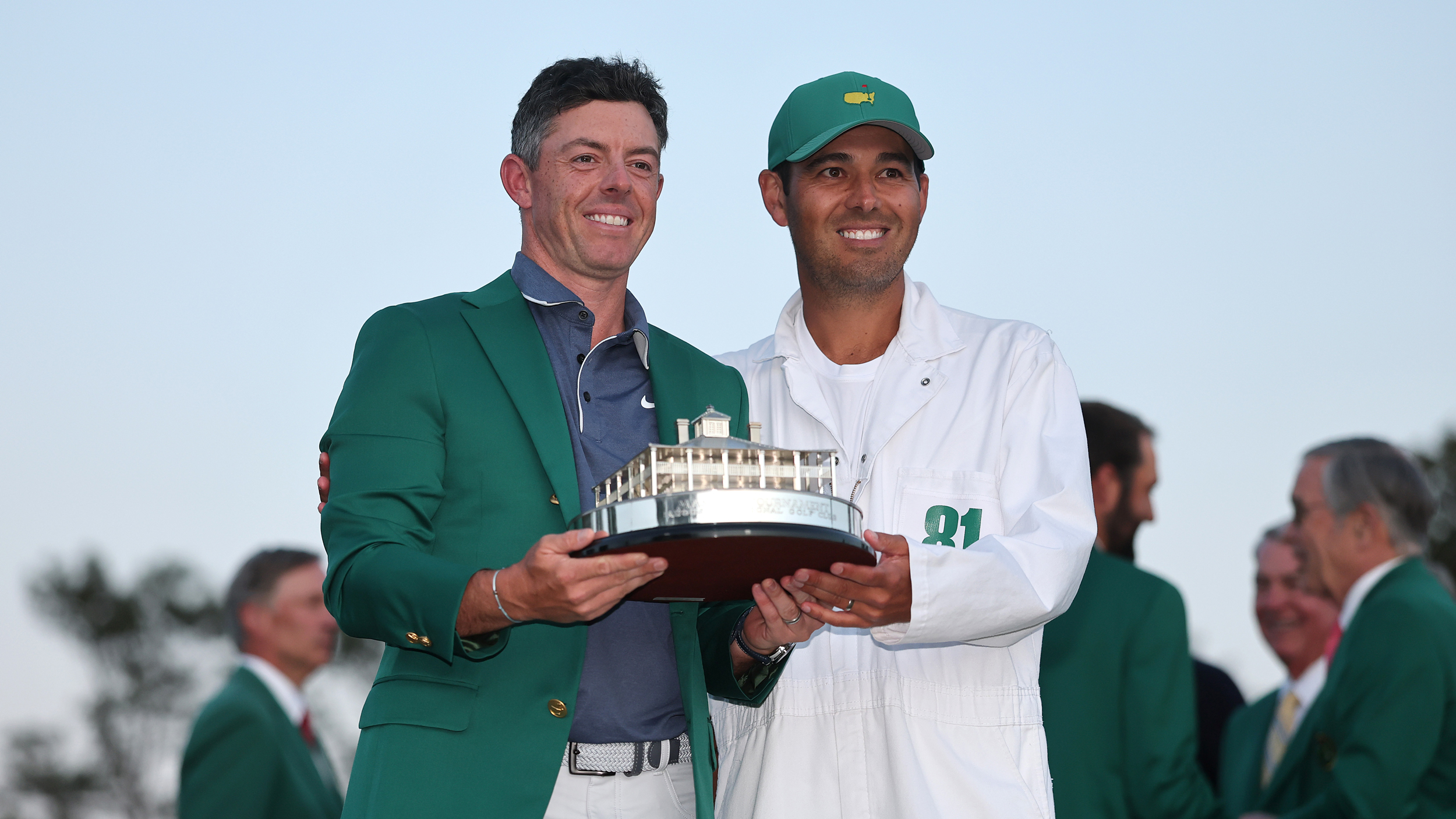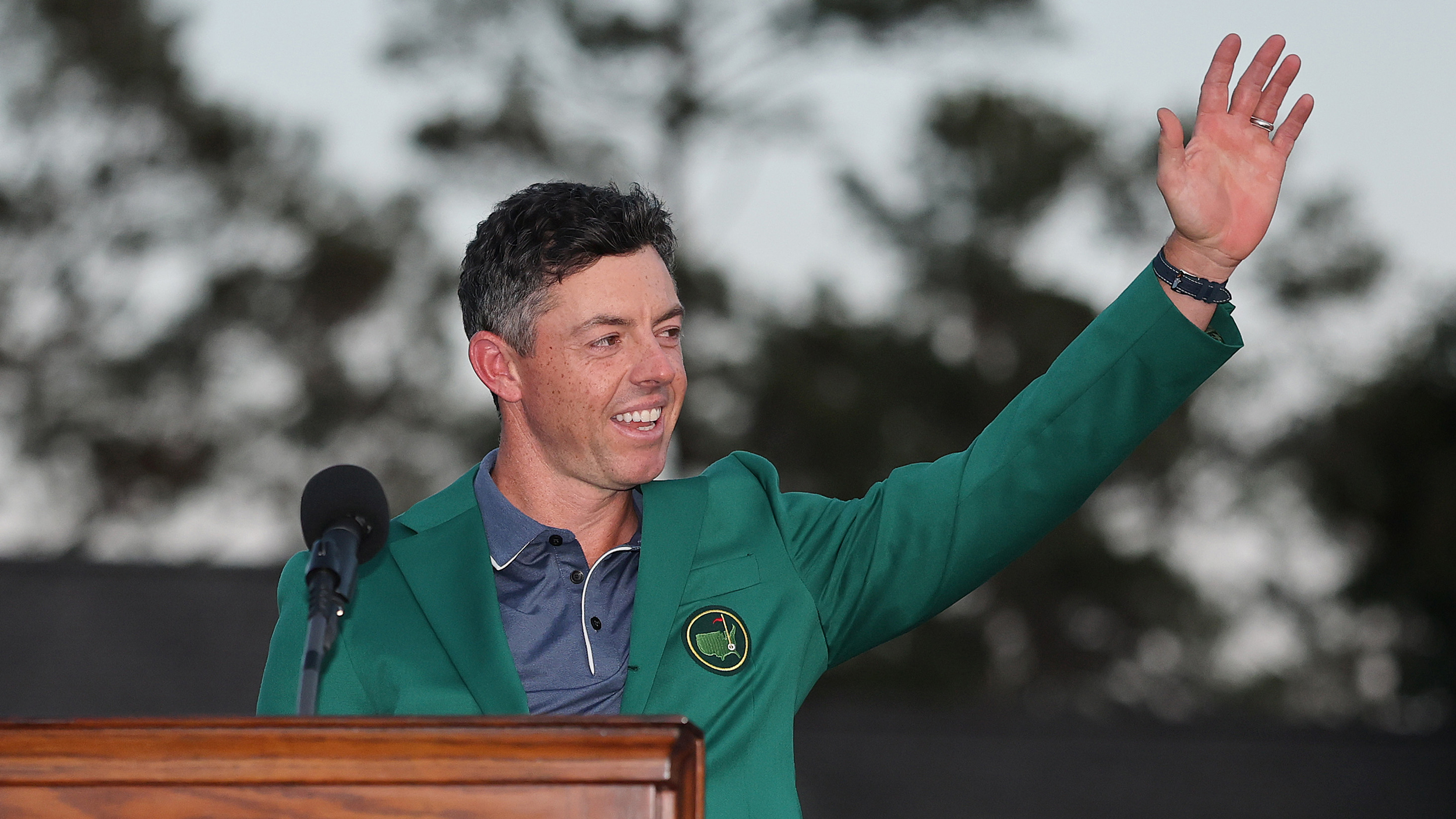Comparing the incomparable
After another season that has seen Tiger Woods leave his peers trailing and as he approaches his 31st birthday, golf-monthly.co.uk's Mark Robinson asks the big question. Is he more dominant at this age than the great Jack Nicklaus, the man whose record number of Major titles Woods is trying to overhaul?

Comparing dominant figures from different eras has long been a favourite pastime of sports fans everywhere, and any such comparison is fraught with controversy, debate and no small amount of bias. Pele or Maradona? Bradman or Richards? Laver or Sampras? Fangio or Schumacher? With Tiger Woods due to celebrate his 31st birthday in December, now seems as good a time as any to evaluate the early careers of the world?s best player and the man who he is trying to emulate, the great Jack Nicklaus.
Comparisons of this type are always difficult. You can only beat the man who challenges you in your era, I hear some of you saying. Any attempt to justify one man?s claim over another could prove to be something of an impossibility ? it will always be a struggle for me to convince a youngster who watches Ronaldinho play football that there was someone better than him decades ago, while it would be equally difficult for me to convince a more experienced observer that things weren?t actually better in their heyday and that the heroes they grew up with had been surpassed by the exploits of a new kid on the block.
And so it goes with golf. My earliest memory of the sport is being allowed to stay up late as a primary school pupil in April 1986, when the 46 year-old Nicklaus won his eighteenth and final Major championship at the US Masters. It was part of my sporting education, with my father eager for me to see his greatest golfing hero cap a glorious career by defeating the likes of Seve Ballesteros to claim his sixth Green Jacket. Here, my father said, was a true giant of modern sport, a man whose sportsmanship and achievements on the course may never be surpassed ? it might be the first and only opportunity for me to see this ageing champion in his pomp.
Some twenty years on, and despite my relatively tender years at the time, the memory of seeing one of the Golden Bear?s famous charges down the back nine has not faded. His fair hair, golden tan and yellow shirt almost made him glow, and the roars of the crowd that evening as he made birdie after birdie have never been louder for me in the subsequent twenty Masters tournaments I have watched. Now, however, there is a man to challenge Jack?s mantle as perhaps the greatest golfer of all time and it is a player I have been fortunate to watch throughout his entire career thus far ? Eldrick ?Tiger? Woods.
Woods clinched his twelfth Major title in August at the USPGA Championship, which means that when he celebrates his 31st birthday in December he will have won four more Major titles at that stage than Nicklaus, who turned 31 in January 1971. In simple terms this seems to suggest that Woods is ahead of Nicklaus at this stage of his career.
Woods is the only man since Ben Hogan to win three Majors in a season (in 2000) and is the only man to have held all four Major titles at once. In 2006 he won multiple Majors for the second year running, becoming the first man in the modern game to achieve this feat. The last man to do it was the immortal amateur Bobby Jones in 1926-27.
Woods holds the record for the biggest margin of victory in the Masters (1997) and the US Open (2000), and in 2000 he won the Open at St Andrews by eight shots ? the biggest margin since JH Taylor in 1913. His US Open victory in 2000 by fifteen strokes is the largest margin of victory in any Major, beating a record that was set 138 years earlier by Old Tom Morris in the 1862 Open Championship. However, while Major victories are undoubtedly the most significant barometer in measuring golfing greatness, further analysis needs to be done.
Get the Golf Monthly Newsletter
Subscribe to the Golf Monthly newsletter to stay up to date with all the latest tour news, equipment news, reviews, head-to-heads and buyer’s guides from our team of experienced experts.
Nicklaus turned professional in 1962 at the age of 22, while Woods turned professional in August 1996, some five months before his 21st birthday - meaning that up to the age of 31 he has started more Majors and more regular tournaments as a professional than Nicklaus did. Woods? 12 Majors have come in 40 starts as a pro, a winning percentage of 30%, while the 8 won by Nicklaus came in four fewer appearances ? a winning percentage of 22%. Up to the end of the 1970 season Nicklaus had won a total of 47 team and individual tournaments around the world, compared to the 74 won by Woods up to and including the WGC-American Express Championship at The Grove at the end of September.
These statistics clearly give Woods the edge over the man he is trying to catch, and there are other factors that must also be examined. It has long been said that Nicklaus was more consistent in terms of finishing high up the field and that he also had to contend with better, more famous players throughout his career.
The consistency argument is an interesting one. Of the 36 Majors he started before his 31st birthday Nicklaus finished in the top ten 23 times ? a mind-boggling 64%. Woods? figure is lower, as is the frequency of his top three and top five finishes. This can be interpreted in two ways. Nicklaus was either the model of consistency or he was not as ruthless as Woods in closing out Major tournaments. Woods has only been runner up twice in Majors, while up to the end of the 1970 season, in four fewer Major appearances, Nicklaus had finished runner-up seven times. One of the most famous and impressive statistics about Woods is that he has never lost a Major that he led going into the final round, which may go some way towards explaining his lack of second place finishes.
In terms of the eras in which they have played out the opening phases of their careers it is often said that Woods has an ?Indian Sign? over some of his closest rivals, who appear to freeze when presented with the task of battling with him on the final day of a Major championship. Had he been faced with a challenge from somebody as great as Arnold Palmer or Gary Player, they say, then he may not have won quite so many Majors. The fact that Nicklaus saw off these truly great players and several others later in his career might possibly give him the edge.
On the surface this seems to be a valid point, but it exaggerates the form of Nicklaus? main rivals in the period 1962-70 and does a grave disservice to those players who have faced Woods from 1997-2006. This early phase of Nicklaus? career saw five other multiple Major winners, winning a combined twelve Majors between them: Palmer (3 Majors between 1962-64); Player (3, 1962-68); Billy Casper (2, 1966-70); Julius Boros (2, 1963-68); and Tony Jacklin (2, 1969-70).
The figures for Woods are absolutely identical, almost eerily so. Five other players also won multiple Majors between 1997-2006 and, as with Nicklaus, three of them have won twice and two of them three times: Ernie Els (2, 1997-2002); Retief Goosen (2, 2001-2004); Vijay Singh (3, 1998-2004); Mark O?Meara (2, 1998); and Phil Mickelson (3, 2004-2006).
But what of the men themselves? Woods is famously single-minded, often prickly towards those fellow players who threaten him and has been groomed for a career in golf and the public eye ever since he appeared on the Mike Douglas Show in America as a toddler. He rarely played any other sports as a child, except for a few sessions of cross-country running at school, and has claimed recently that one of the only ways he can relax is by diving ? it seems that only being underwater protects him from the glare of publicity he finds himself in on dry land.
Nicklaus was a more rounded sportsman and he always had a variety of interests and hobbies, something that crucially enabled him to switch off from golf throughout his career. Despite being a prodigiously talented junior golfer he also represented his college at baseball, basketball, American football and tennis. ?I didn?t even decide that golf was a significant part of my life until I was nineteen,? he said a few years ago. ?By that age Tiger was already public property.? The Golden Bear has famously lived in the same house in Florida since 1965 and all of his family live within a few miles of him. The colourful Chi-Chi Rodriguez once referred to Nicklaus as ?a legend in his spare time? ? not something that could be levelled at the much more intense Woods.
Nicklaus also has more of a reputation for affability than Woods, who often isolates himself from the other players on tour. Nicklaus, on the other hand, used to offer detailed advice to his rivals on both technique and temperament. This humanised him in a way that Woods has never allowed himself to be, and some of Nicklaus? rivals, notably Johnny Miller and Lee Trevino, began to believe that they could defeat him.
These character traits are undoubtedly part of Nicklaus? appeal and added considerably to his popularity. His crucial efforts with Player and Palmer in making golf a global sport in the 1960s are fondly recalled by those old enough to remember, and easily overlooked by those who aren?t.
In terms of who is the better golfer at the age of 30 ? I?ll leave you to draw your own conclusions, but I hope that I have managed to dispel some of the myths that surround this debate. Despite improvements in technology the comprehensive statistical evidence is in Woods? favour, as is the overwhelming dominance he enjoys over his peers when he is in contention for a tournament. If anything, Nicklaus? numerous high profile near misses in Majors served to boost the profiles of some of the men who beat him. Woods has never given the careers of his rivals this sort of shot in the arm.
Woods remains, however, six Major championships short of Nicklaus? tally. While it is expected by many observers that he will pass this mark with relative ease, it is no sure thing. It should be remembered that many players made promising starts to their careers but rather lost their way in their mid-to-late thirties ? Palmer, Ballesteros and Tom Watson are obvious examples of this.
Nicklaus won half of his eighteen Majors between 1971-80, proving that he had that most elusive combination, talent and longevity, in equal measure. Woods certainly matches him, even surpasses him, in terms of talent, and only time will tells us whether it is a Tiger or a Bear that sits alone at the top of the golfing food chain.
WOODS V NICKLAUS AT AGE 30 - THE NUMBERS
Woods will be 31 on Dec 30th, 2006
Nicklaus was 31 on Jan 21st, 1971
US Amateur Championships: Woods 3-2 Nicklaus
Major Championships: Woods 12-8
Runner-up in Majors: Nicklaus 7-2 Woods
PGA Tour wins: Woods 54-33 Nicklaus
Worldwide wins: Woods 18-9 Nicklaus
Two-man team wins: Nicklaus 5-2 Woods
Total victories: Woods 74-47 Nicklaus
Ryder Cup caps: Woods 5-1 Nicklaus
% of Major wins to starts: Woods 30%, Nicklaus 22%
% of Major top tens to starts: Nicklaus 64%, Woods 60%
-
 'This One Is Just As Much His As It Is Mine' - Rory McIlroy Pays Emotional Tribute To 'Big Brother' Harry Diamond After Historic Masters Win
'This One Is Just As Much His As It Is Mine' - Rory McIlroy Pays Emotional Tribute To 'Big Brother' Harry Diamond After Historic Masters WinThe 2025 Masters champion couldn't hold back the tears when discussing the importance of his relationship with caddie Harry Diamond
By Elliott Heath Published
-
 Rory 2.0 Was Born At The 2025 Masters... McIlroy Is Now Free Of His 11-Year Major Burden
Rory 2.0 Was Born At The 2025 Masters... McIlroy Is Now Free Of His 11-Year Major BurdenThe Northern Irishman dug deeper than he ever had to get over the line and finally seal the missing green jacket to his career grand slam puzzle
By Elliott Heath Published